Goats Hair Tent
Introduction
Following thermal comfort surveys in refugee camps in Jordan there was anecdotal evidence that tents used in the refugee’s country of origin were more comfortable in hot dry conditions. While it was not originally the intention to test tent structures within the project, while undertaking thermal comfort surveys in southern Turkey we came across a goat’s hair tent being used by nomads during hot summers. The tent textile is handwoven and hand-stitched. The nomads who have used this type of goat hair tent for centuries are called "Yörüks" in Turkish (literally, the walkers). They live in these tents year round (not only in hot weather).
Given that such structures employ natural materials and that refugee shelters are frequently extended to incorporate open space adjacent into the main living areas, it was considered of value to explore the performance of this shelter type.
In collaboration with Esra Sahin Burat (Assoc. Prof. / Chair, Mersin University Dept. of Architecture, Turkey), a tent was procured and erected at the main campus. The shelter, measuring approx. 3.5m x 6.5m is made from natural goat’s hair, the roof is a double layer and the walls a single layer. The posts are made from willow and the guy ropes from sisal. The side aprons are fixed to the roof canopy with iron needles. The needles used to be made of wood in the past but it is hardly possible to find them these days. Wooden ones had a shorter life span but they were much lighter to carry. Iron needles also bleed rust onto the textile.
Images from the construction can be seen below:
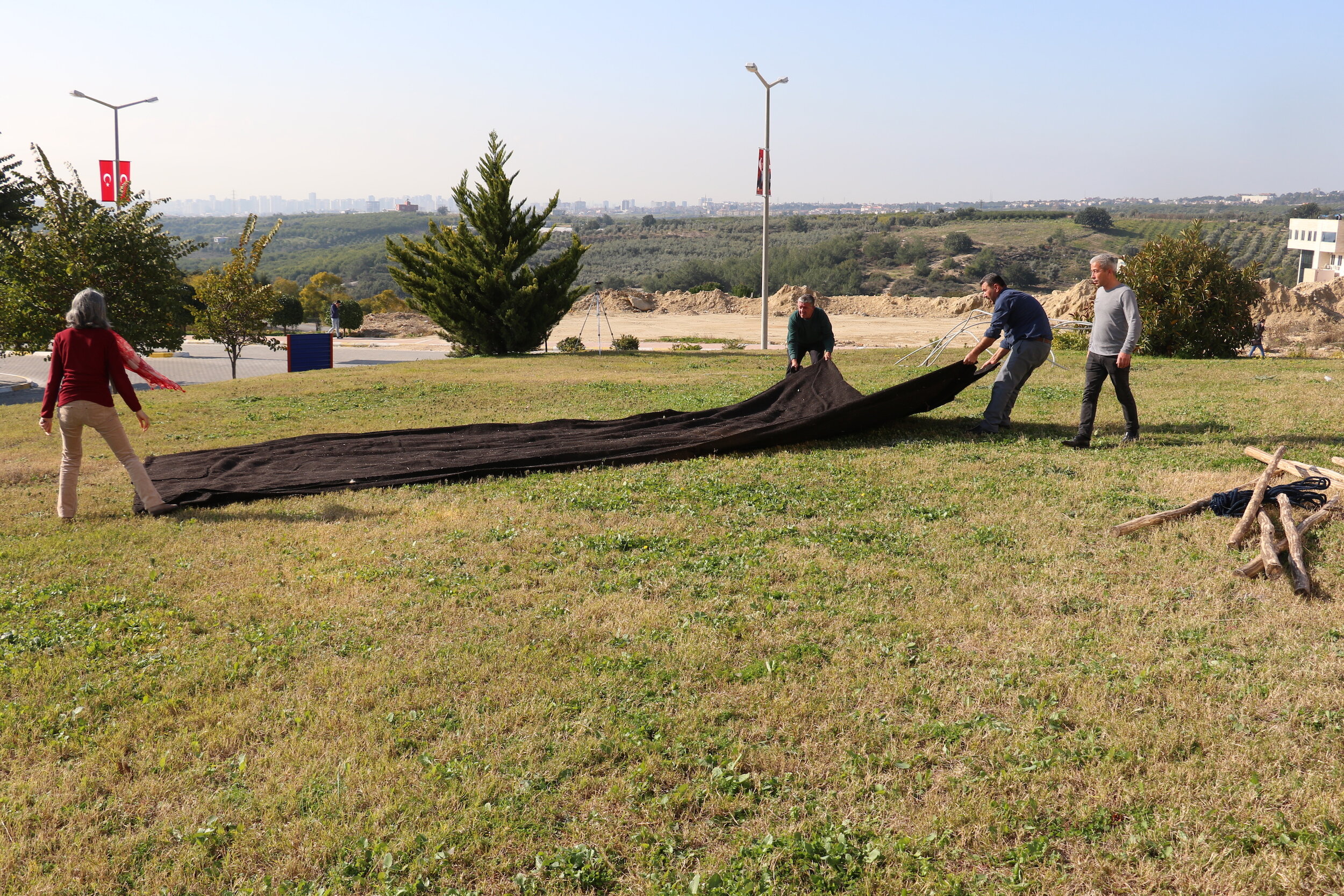
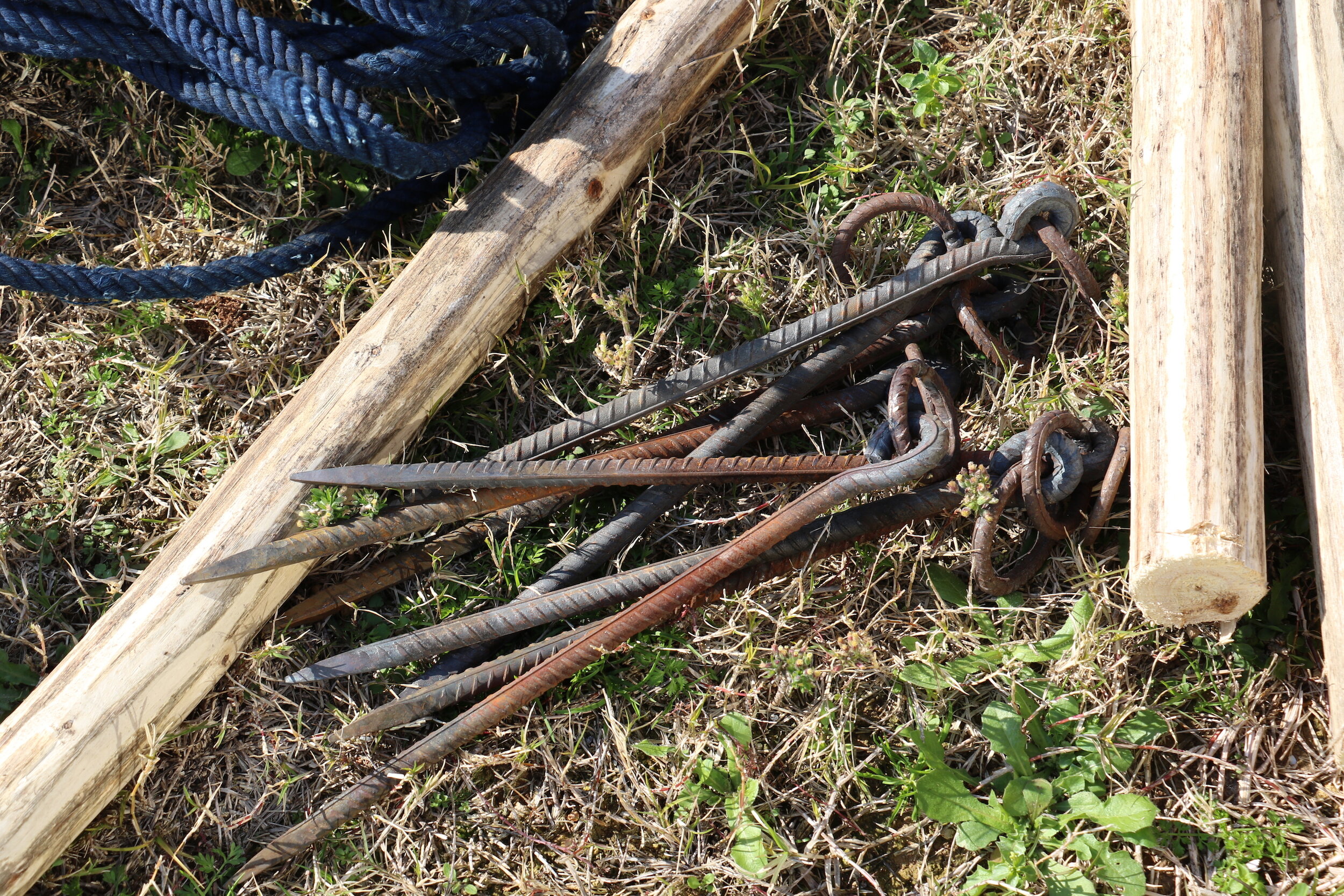
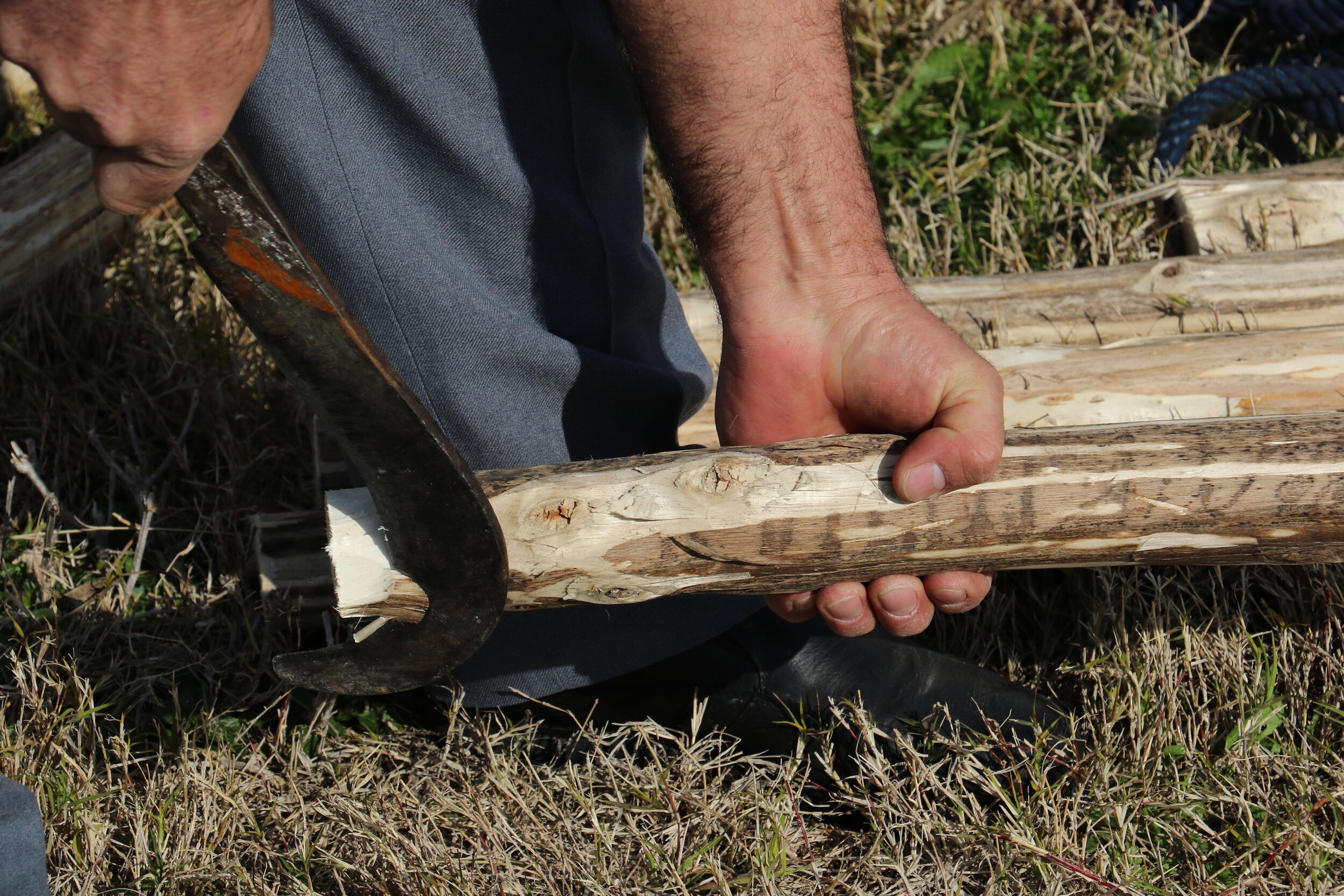
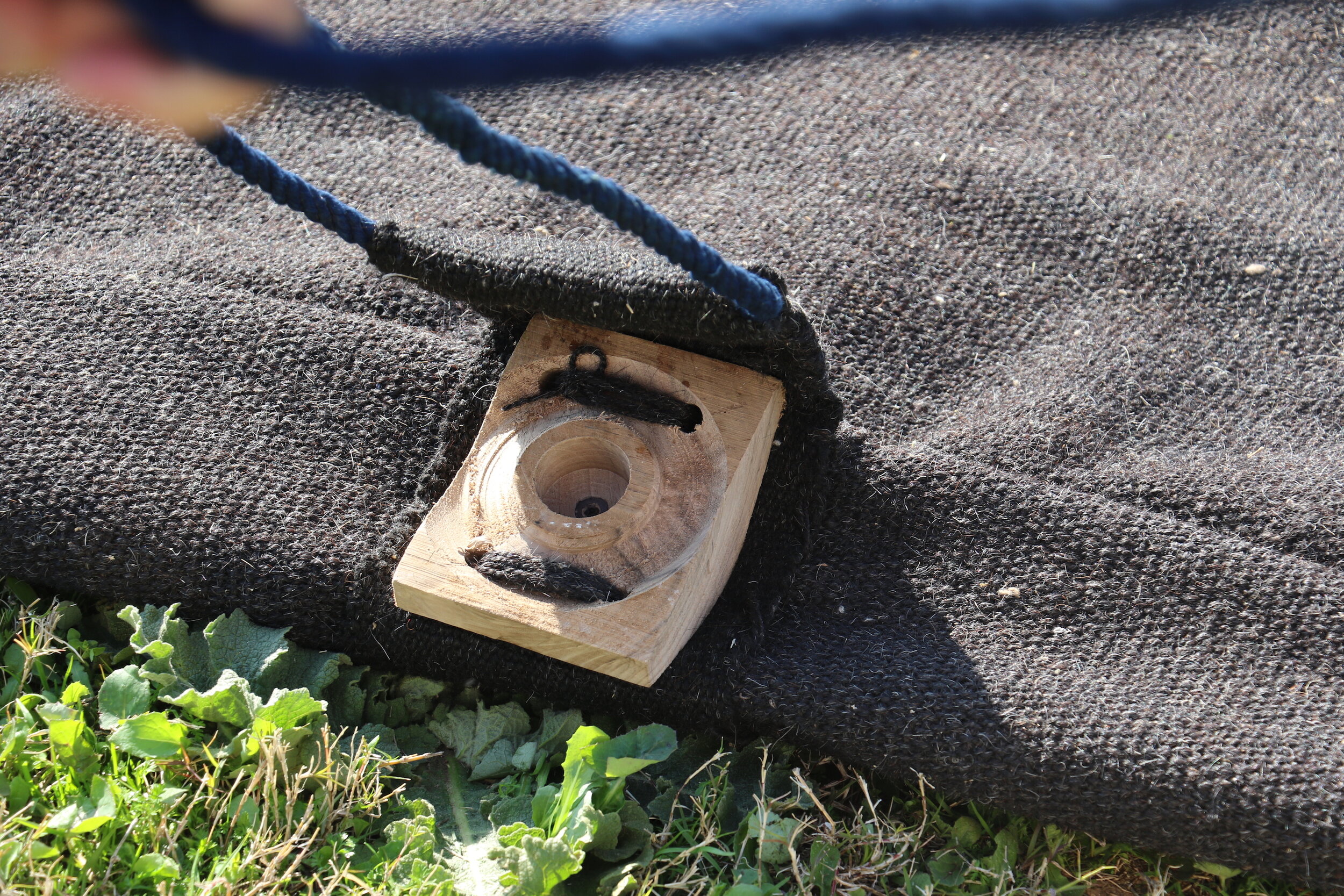
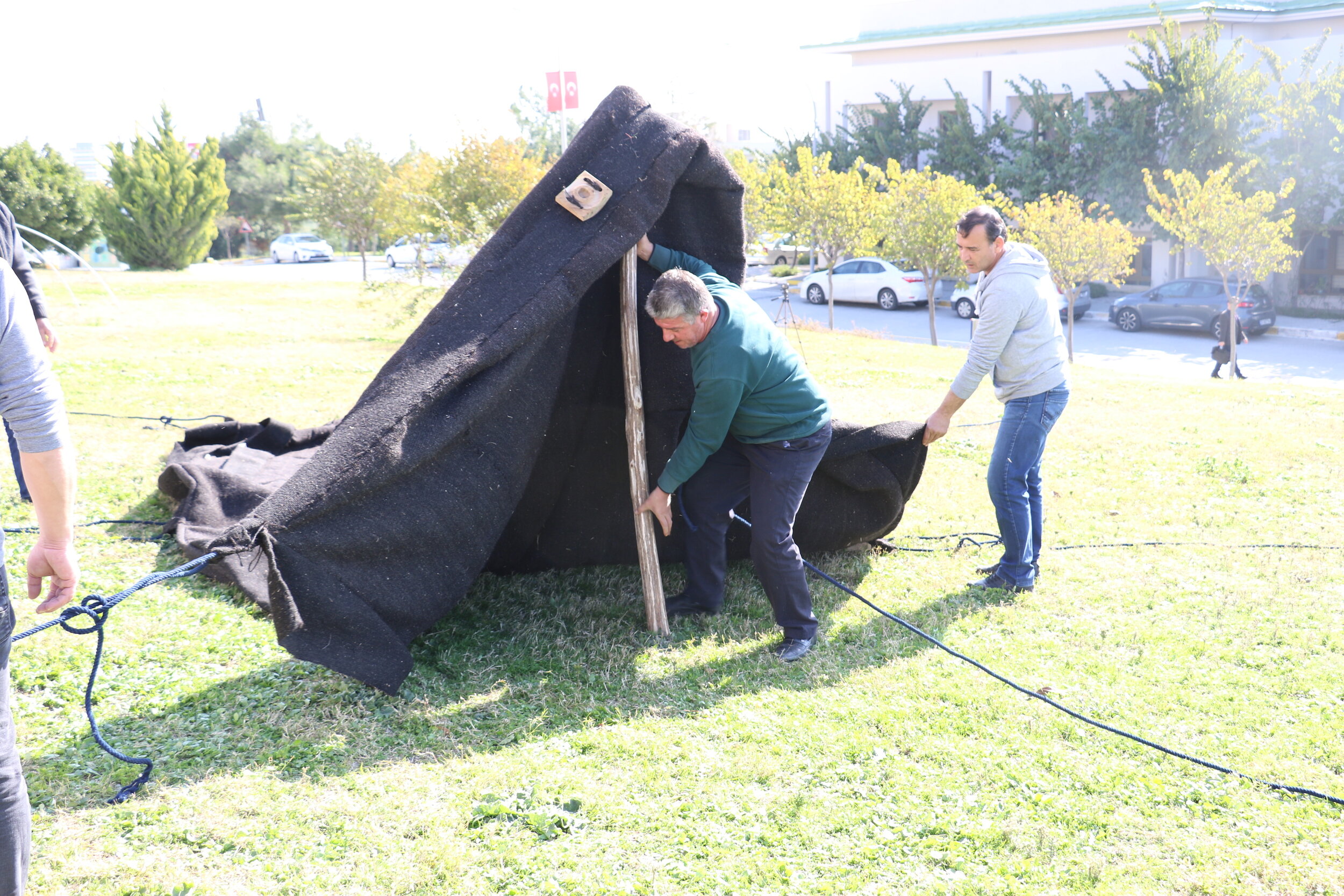
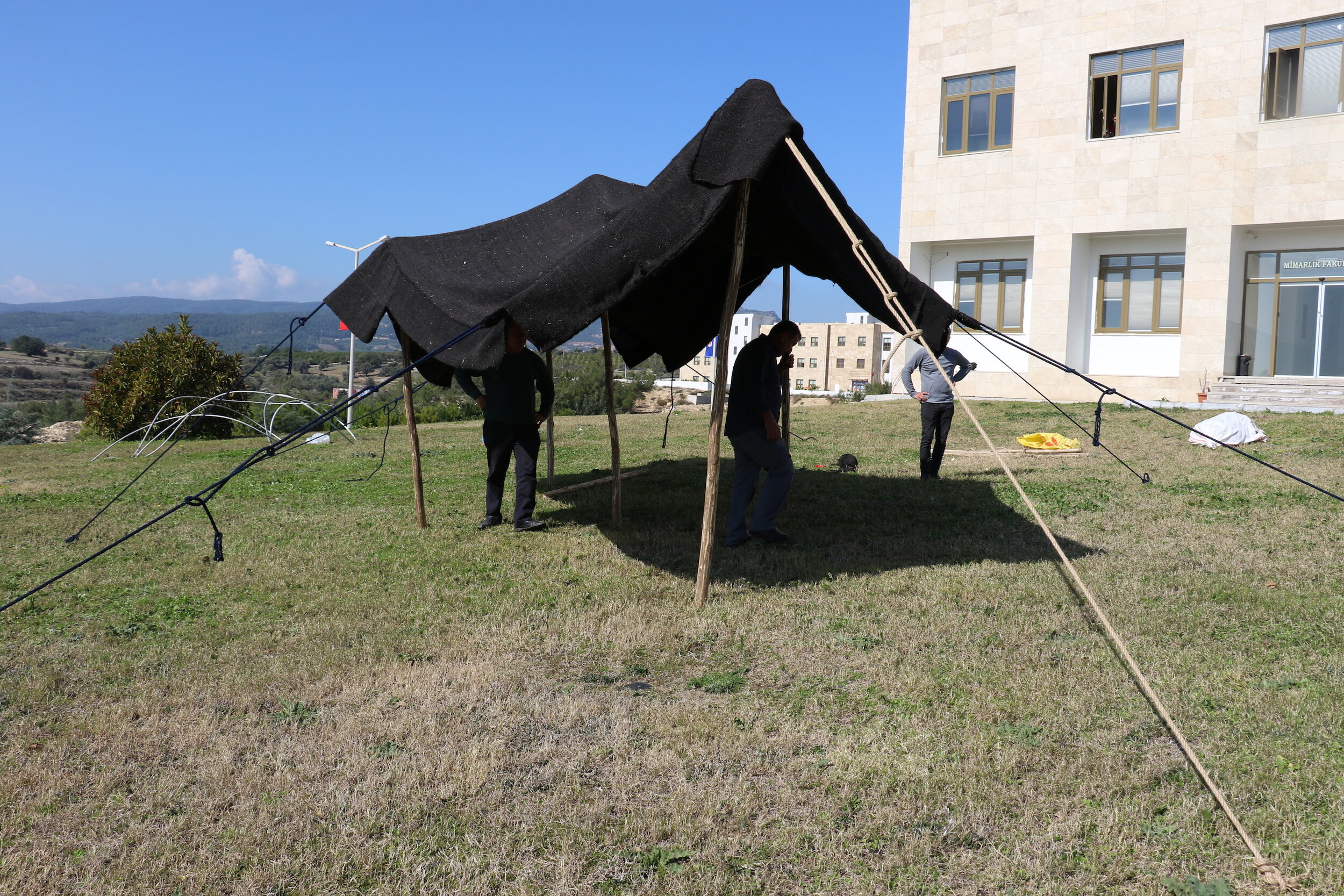

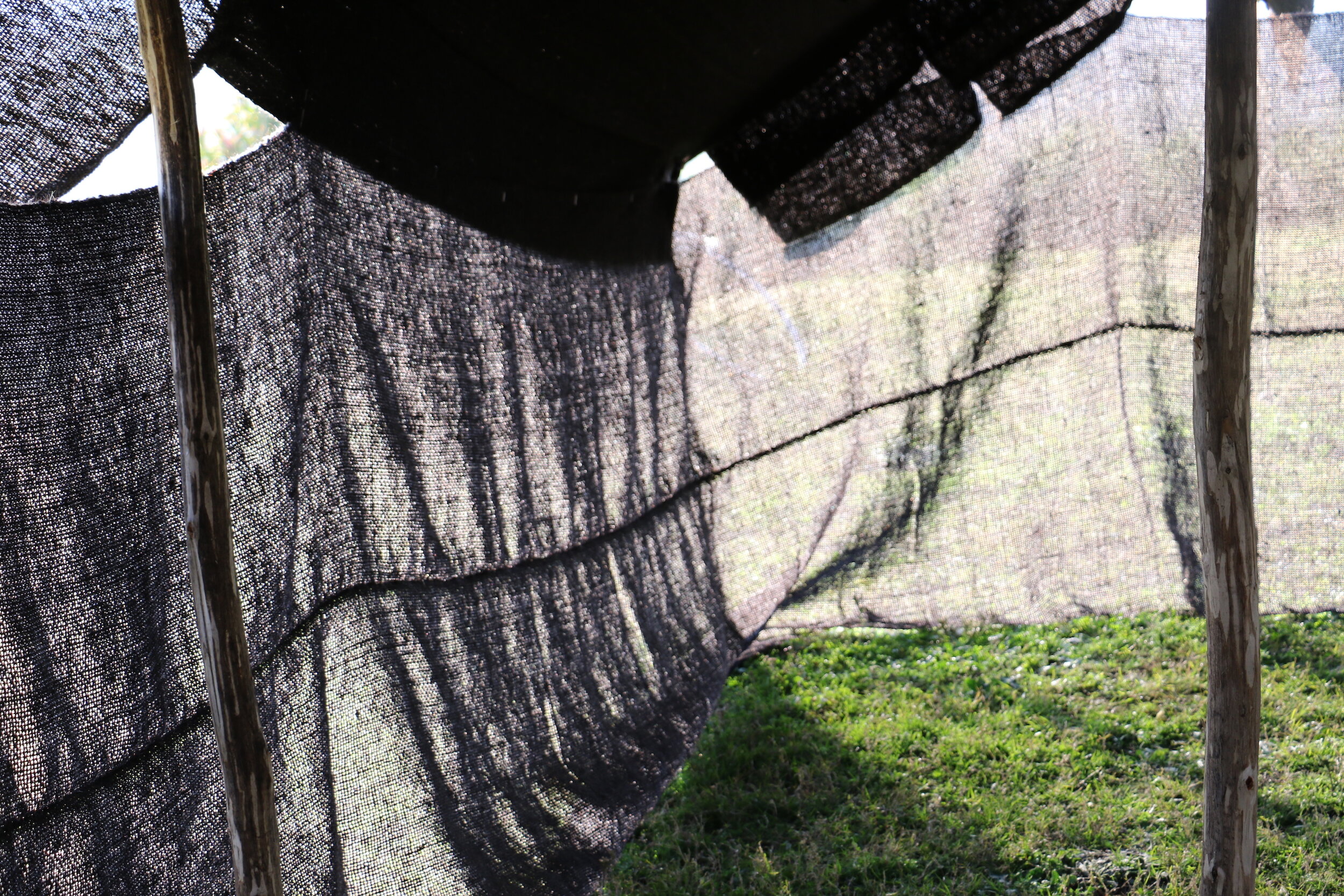
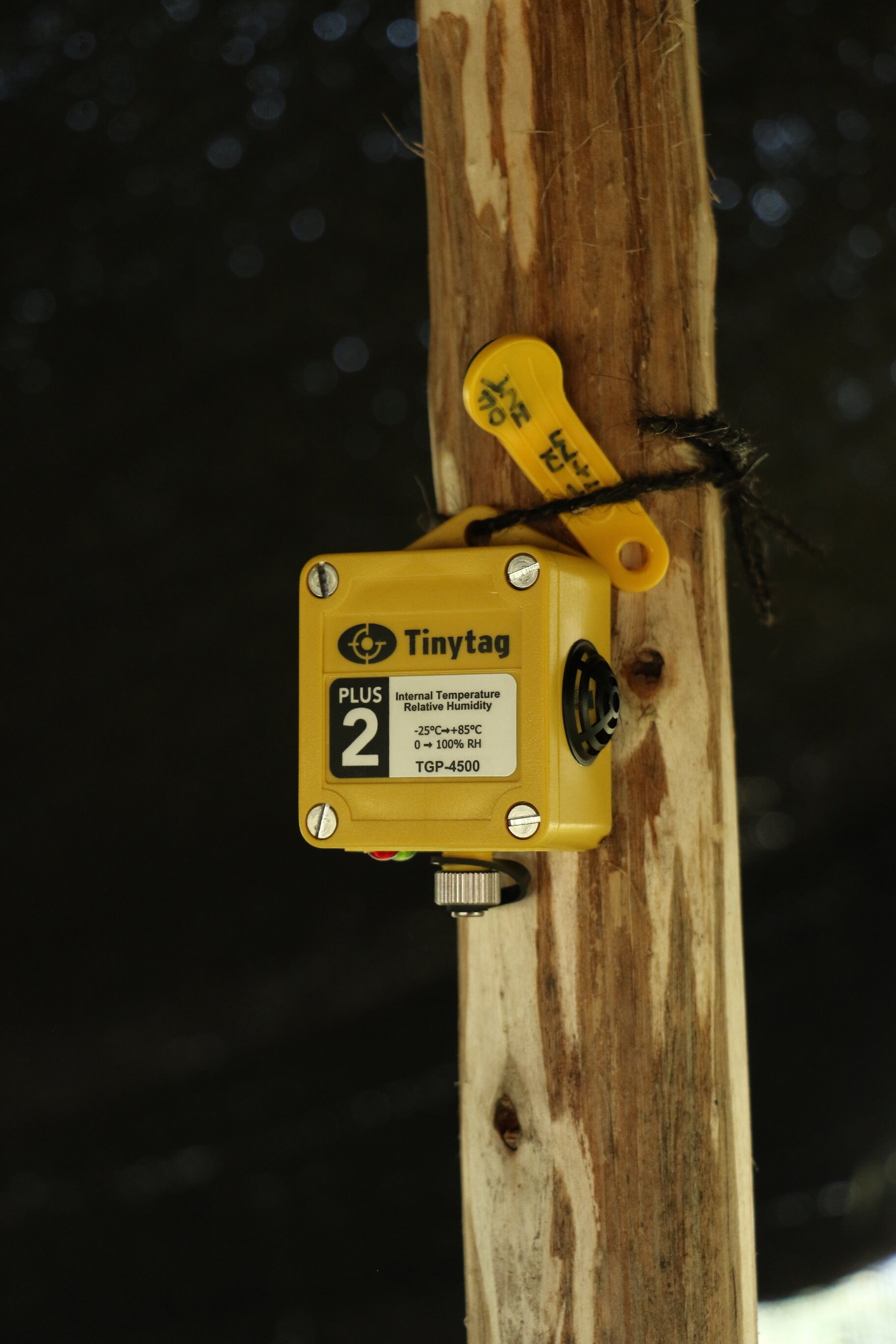
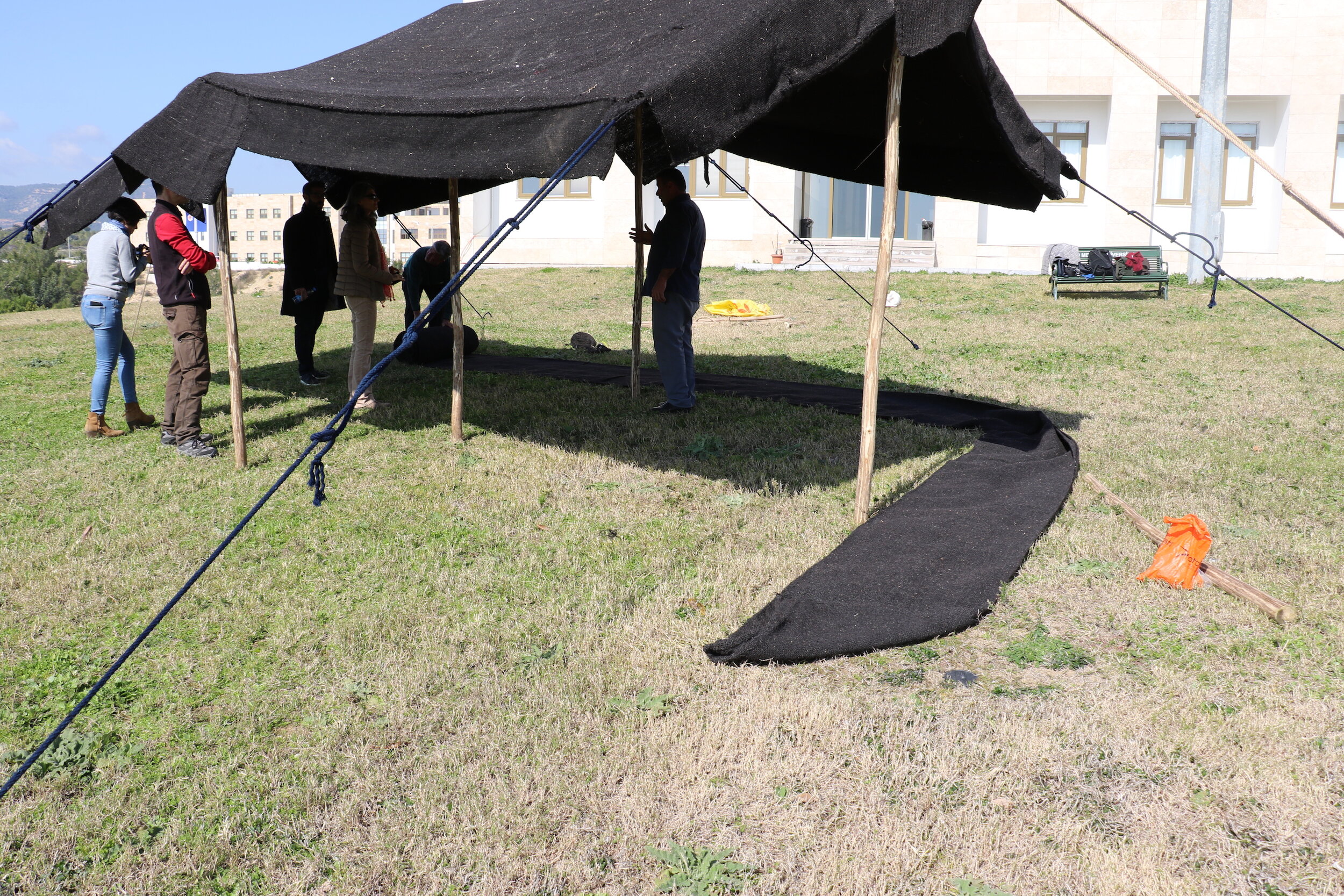
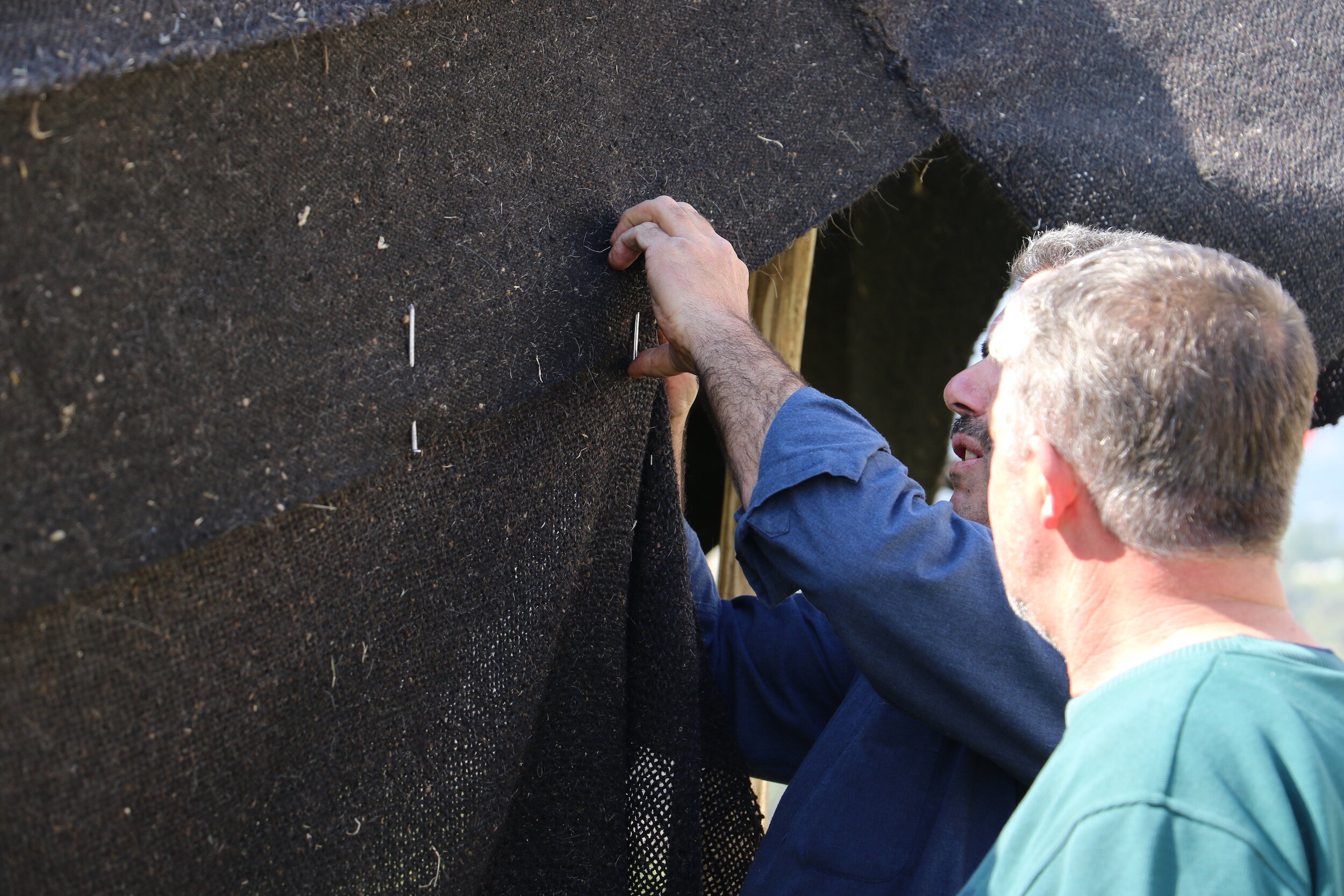
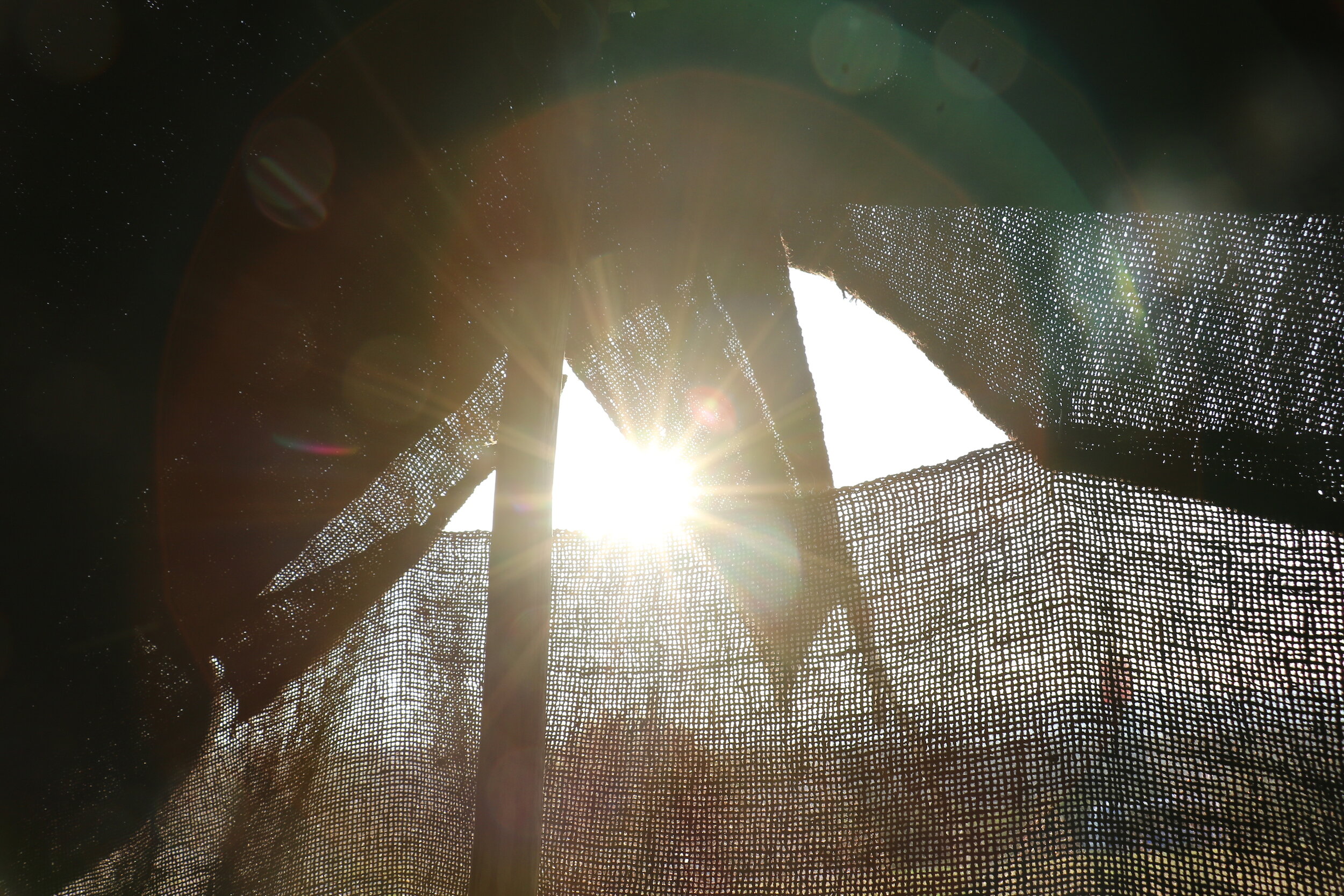
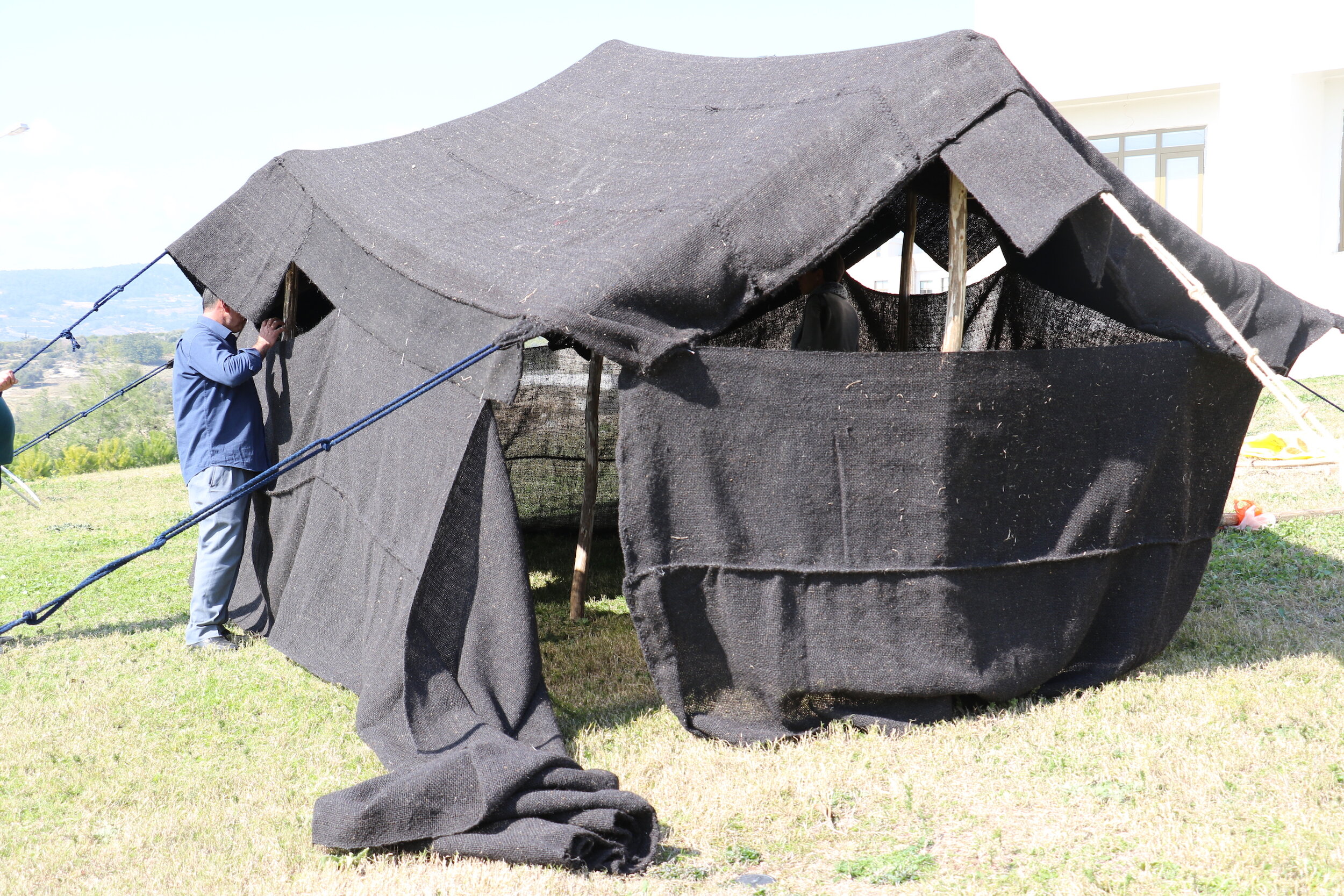
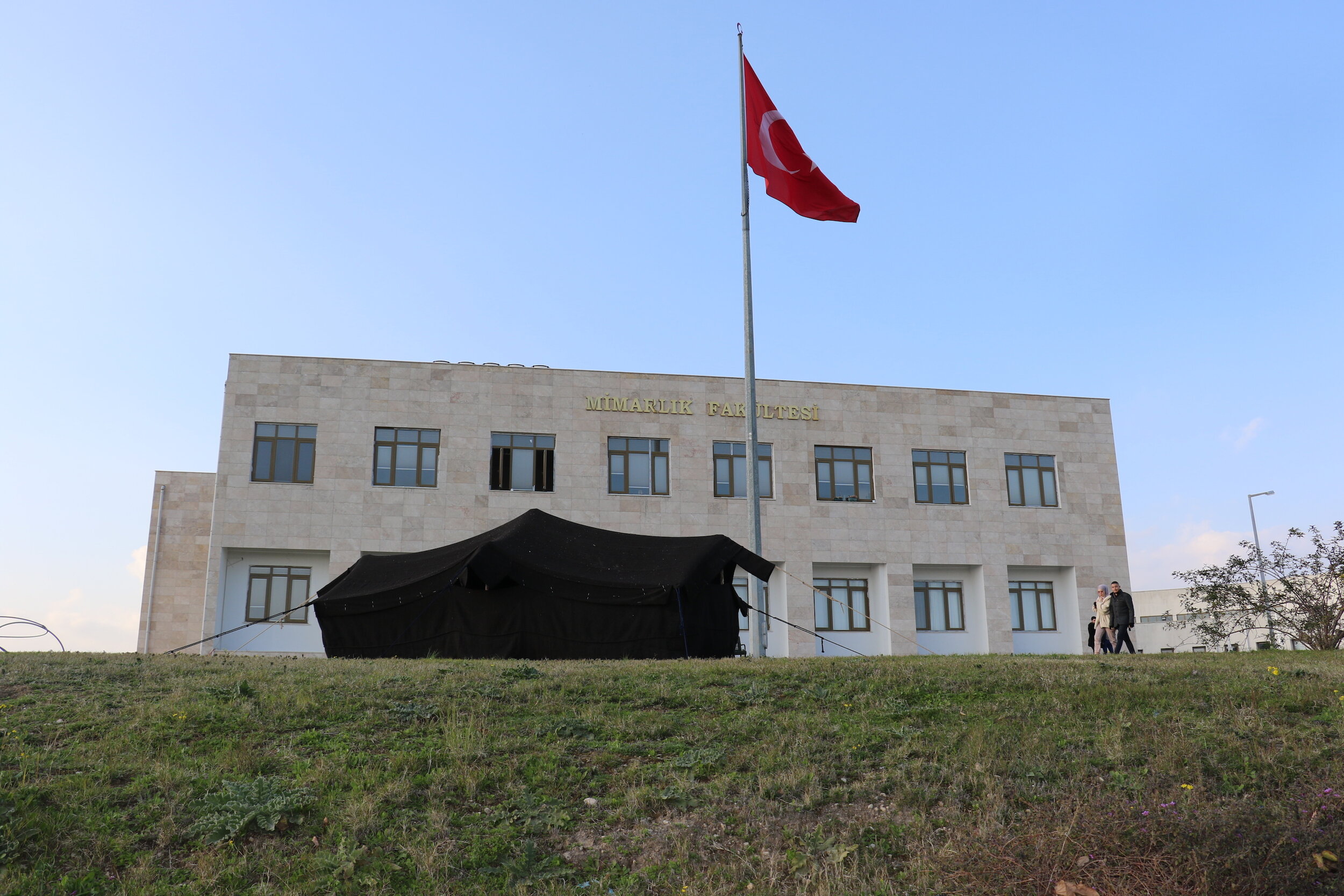
Sensing
The tent is fitted with temperature and relative humidity sensors internally and externally.
